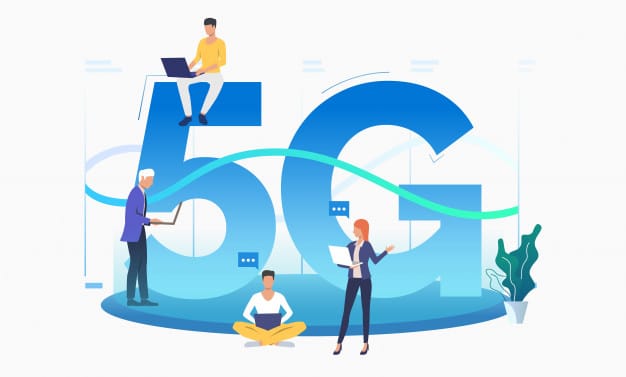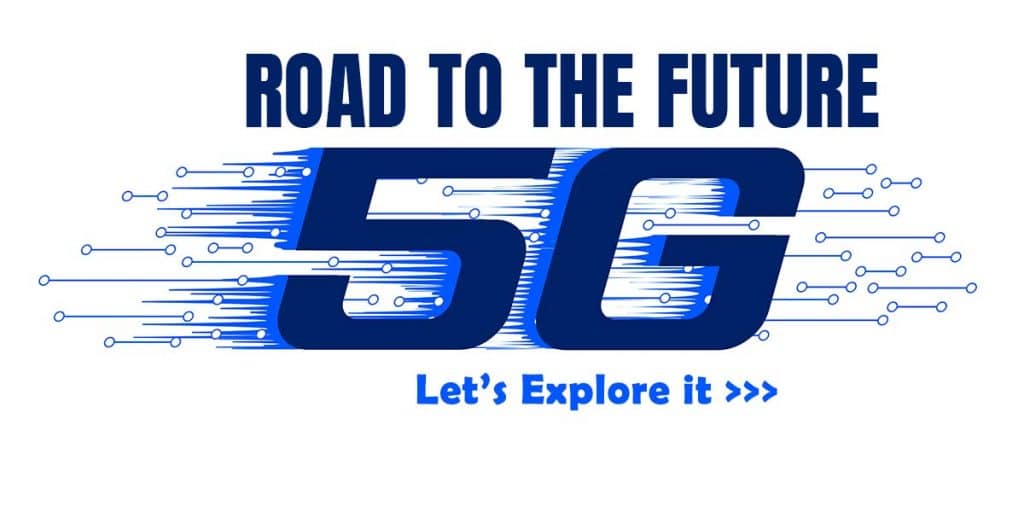Table of Contents
Generations of mobile networks
1G-The first analog cell phones enter the world. 2G-Gave us SMS and voicemail. 3G-delivered Higher data rates to access the internet through mobile, image sharing, and GPS location-tracking. 4G-Broadband delivers deep web functionality to our smartphones.

What is the 5G?
5G or 5th generation wireless mobile communication system is an evolution of today’s 4G LTE and LTE-A networks. 5G is designed to meet the ever-increasing demand in internet data and connectivity of today’s society, the internet of things with billions of connected devices, and tomorrow’s innovations. 5G will primarily operate in combination with existing 4G networks before growing to fully standalone networks in later releases and coverage expansions. 5G is a combination of 5 new technologies: millimeter waves, small cells, massive MIMO, Beamforming, and Full duplex. These five technologies together enable applications like virtual reality, Autonomous driving, and IoT.
5G vs 4G
The governing body that controls the implementation of wireless mobile communication technologies worldwide is known as 3GPP (Third Generation Partnership Project). According to 3GPP specification, Other than the above five technologies, 5G is similar to 4G where many limitations in 4G is turned into flexible properties. When we discuss the differences between 4G vs. 5G, we’re concerned about the connectivity speed, reliability, Population density, travel speed, and distance all affect how fast a device can communicate with a network. Refining network features such as mobility, power consumption, and range of services. Although it seems simple in this article, significant effort needs to be taken to enable 5G globally. Improved efficiency means the power consumption of a 5G mobile device is more significant than in a 4G LTE mobile device. Improved connectivity means that people living in densely populated areas can connect simultaneously without experiencing latency or speed. Better mobility means we can stay connected while traveling faster than ever.
However, most of the current 5G network areas in campus networks are explicitly built for research purposes. Some highly autonomous factories also use dedicated 5G networks inside their premises. Service providers are slowly integrating 5G into their network plans, requiring a new generation of mobile devices and base stations. That integration process seems to be slow because of the high cost of the 5G equipment.
Once 5G is readily available to the general population, how much will it change the world we live in? Knowing what impact prior networks have had in the past can give us an idea of the impact 5G will have in the future. Where 4G often struggled during peak hours, 5G will allow many users to connect simultaneously. It will eliminate network congestion and allow users to stream live TV with no buffering. Industry experts say that low latency and higher speed are only a drop of the promising 5G technology, predicting that future innovations will use 5G’s improved connectivity to power some of our generation’s most significant communication advances. Recently 5G supported mobile phones like Samsung S21 were entered the market, starting at the age of 5G.
Applications of 5G
Primary service providers worldwide are already looking into advancing into 5 G-based Wi-Fi routers, as the connectivity would be firm enough to power home devices only from the 5G network. 5G Wi-Fi connectivity would benefit the users who don’t want to tie their internet connection to a specific location or area.
It’s been predicted that 5G will be up to 10 times faster than previous generations. This low latency of the 5G creates many exciting opportunities for both industries and personal users. For example, increased connectivity can deliver high-resolution 4K video calls. For the record, 4K is also the industry standard for commercial digital movies. Higher bandwidth Internet connections will enable quality video conferencing and enhance the work from home experience.
Low latency will be the key discriminating factor between 4G and 5G. This alone will be enough to attract many of the world’s largest industries to adopt the 5G network as quickly as possible. Communication industry experts predict that 5G will power smart cities and other inventions like autonomous cars, so let’s consider how such new technology might affect consumers.
- Healthcare- Healthcare providers can create sensor networks to track patients and share information faster than ever before, saving the lives of many peoples.
- Infrastructure-Better communication means more efficient travel and distribution of goods and services across the globe.
- Public safety- A vast network and rapid response times mean that public works can respond to incidents and emergencies in seconds rather than minutes, and municipalities can react fast and with reduced costs.
- Autonomous vehicles- 5G will allow vehicles to communicate between themselves and infrastructure on the road, improving safety and alerting drivers to travel conditions and performance information.
Health Hazards related 5G
5G connection uses two sets of frequency ranges for the sub-Gigahertz operation and other frequencies greater than 5 GHz. These higher frequency waves than earlier mobile networks, allowing more devices to have access to the internet at the same time and faster speeds. These waves travel shorter distances through urban spaces, so 5G networks require more transmitter masts than previous technologies; in urban areas, the 5G network is known as a small cell positioned closer to ground level. Skin tissue heating is the main impact due to the interaction between radiofrequency fields and the human body. Radiofrequency contact levels from existing technologies result in insignificant temperature rise in the human body. The electromagnetic radiation used by all mobile devices has led some people to worry about increased health hazards, including developing certain types of cancer.
When will 5G be available in public?
In Sri Lanka, currently there is 5G coverage on Colombo main city area. Main service providers established 5G networks connecting research facilities, factories, and community centers. Two problems that telecom operators need to face to use 5G are getting the frequency licensing for the higher frequency bands and the 5 G-enabled radios for their base stations. Although 5G technology is available to a greater extent, public availability of 5G depends on the above two factors.



